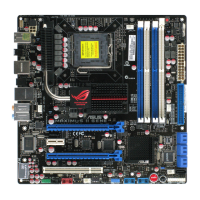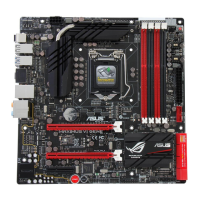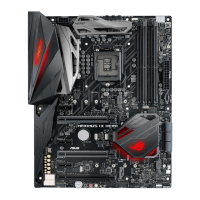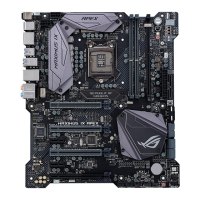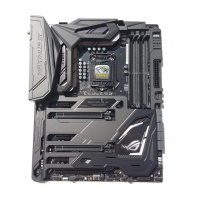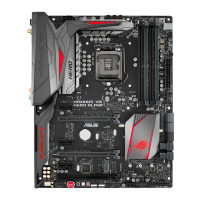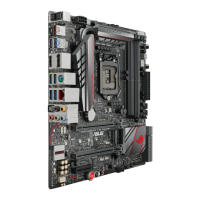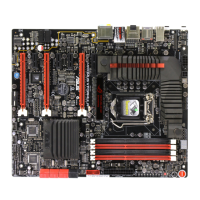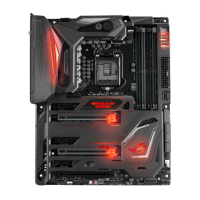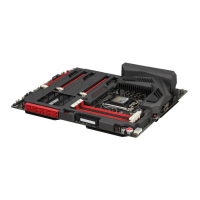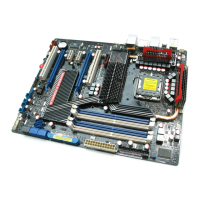
Do you have a question about the Asus MAXIMUSII/FORMULA - Maximus II Formula Motherboard and is the answer not in the manual?
| Brand | Asus |
|---|---|
| Model | MAXIMUSII/FORMULA - Maximus II Formula Motherboard |
| Category | Motherboard |
| Language | English |
A brief welcome message from the manufacturer.
Lists all the items included in the motherboard package for user verification.
Details the key features and technologies of the Maximus II Formula motherboard.
Provides a summary of the motherboard's main selling points and innovations.
Explains advanced performance and overclocking capabilities for enthusiasts.
Highlights exclusive features designed for gamers and overclockers.
Describes additional features and technologies developed by ASUS for enhanced functionality.
Important safety precautions and preparation steps before installing hardware components.
A comprehensive guide to the physical layout and components of the motherboard.
Diagram and identification of key connectors, slots, and components on the motherboard.
Layout and connection details for the integrated SupremeFX-Fi audio card.
A list detailing the purpose and location of various connectors, jumpers, and slots.
Guidance on orienting the motherboard correctly within the computer chassis.
Instructions on where to install screws to secure the motherboard to the chassis.
Information on CPU socket compatibility and installation procedures.
Step-by-step instructions for safely installing a CPU into the LGA775 socket.
Procedures for mounting the CPU heatsink and fan assembly for optimal cooling.
Steps to safely remove the CPU heatsink and fan assembly from the motherboard.
Details on DDR2 memory modules and their installation.
Description of the DDR2 DIMM sockets and their physical dimensions.
Guidelines for installing memory modules and recommended configurations for performance.
Instructions for correctly inserting a DIMM module into the motherboard socket.
Information on various expansion slots like PCI and PCI Express.
Step-by-step guide for installing expansion cards into available slots.
Procedures for configuring installed expansion cards through BIOS settings.
Details on IRQ assignments for various system devices and slots.
Information on the standard PCI slots and compatible expansion cards.
Details on PCI Express x1 slots and their usage for network or other cards.
Information on PCI Express x16 slots for graphics cards and CrossFire support.
Explanation of the function and configuration of various jumpers on the motherboard.
Detailed listing and description of all motherboard connectors.
Identification and function of ports located on the motherboard's rear I/O panel.
Description of internal connectors for front panel headers, fans, and other components.
Information about the onboard power and reset switches for system control.
Guides for installing optional accessories and add-on cards.
Instructions for installing an additional fan for improved cooling performance.
Procedure for installing the SupremeFX X-Fi audio card into its dedicated slot.
Steps for installing the I/O shield and the external LCD Poster.
Essential steps for the initial power-on and system boot process.
Instructions on how to properly shut down the computer system.
Overview of utilities for BIOS management, including updates and backups.
Guide to using the ASUS Update utility for BIOS management within Windows.
Instructions for updating the BIOS using the built-in EZ Flash 2 utility.
Details on using the AFUDOS utility for BIOS updates in a DOS environment.
Information on recovering the BIOS using the CrashFree BIOS 3 utility.
General guide on navigating and using the BIOS Setup utility.
Visual guide to the main BIOS menu structure and its sections.
Explanation of the main menu items used for navigating BIOS settings.
Description of keyboard keys used for navigating within the BIOS interface.
Overview of the types of items and options available within BIOS menus.
How to access and interact with sub-menus within the BIOS setup.
Understanding how to view and change BIOS settings within configuration fields.
How pop-up windows are used to display configuration options in BIOS.
How to use scroll bars to view all options on BIOS screens.
Accessing and using the general help information within the BIOS.
Detailed settings for overclocking and fine-tuning system performance.
Specific options for adjusting CPU and system performance parameters.
Provides an overview of basic system information within the BIOS.
Setting the current system time within the BIOS.
Setting the current system date within the BIOS.
Configuration for legacy floppy drive types.
Selecting the display language for the BIOS interface.
Configuration and information for Serial ATA devices connected to ports SATA 1 through 6.
Settings to configure Serial ATA devices, including IDE, AHCI, and RAID modes.
Advanced configuration options for AHCI mode, including boot time and port settings.
Displays detected BIOS, processor, and memory information for the system.
Settings for advanced system devices and configurations.
Configuration for the AI NET 2 utility, including LAN cable checks.
Advanced settings related to the motherboard's chipset and memory remapping.
Enables or disables various onboard devices like audio, LAN, and USB controllers.
Settings for controlling USB functions, modes, and legacy support.
Configuration options for Plug and Play devices and their operating system interaction.
Settings for controlling the LCD Poster display and onboard LEDs.
Miscellaneous advanced configuration options for system features.
Settings for power management features and ACPI states.
Configuration of system suspend states (S1, S3) for power saving.
Setting to control video display during system resume from S3 state.
Enabling or disabling support for ACPI version 2.0.
Enabling or disabling ACPI support with APIC for interrupt handling.
Configuration of Advanced Power Management features like AC power loss behavior.
Monitors system hardware status including voltages, temperatures, and fan speeds.
Options for configuring system boot behavior and security.
Sets the sequence of devices for system boot-up.
Options to configure boot speed, logo display, and error handling.
Manually selecting which BIOS to boot from if multiple are available.
Settings for BIOS passwords, user access levels, and system security.
Access to various system utilities for maintenance and configuration.
Utility for updating the motherboard BIOS directly from within the BIOS.
Allows saving and loading multiple overclocking profiles.
Utility for backing up or restoring BIOS content between different BIOS chips.
Options for saving changes, discarding them, or loading default BIOS settings.
Guidance on installing Windows operating systems and necessary updates.
Overview of the contents provided on the motherboard's support DVD.
Instructions on how to launch the support DVD interface and its main menus.
Details on available device drivers and their installation procedures.
Information on included software utilities for system management and enhancement.
Options for creating driver disks for RAID or SATA controllers.
Access to supplementary user manuals provided on the support DVD.
Access to video clips showcasing motherboard features and performance.
Information on how to contact ASUS for support and assistance.
Access to additional motherboard and support DVD related information.
Detailed descriptions of various software applications and utilities.
Utility for customizing the boot logo displayed during system startup.
Network diagnostic utility featuring a Virtual Cable Tester.
Software for managing and enhancing audio features from the SupremeFX X-Fi card.
System monitoring utility that detects and alerts on vital component status.
Energy saving utility that optimizes power consumption and system performance.
Integrated software suite for managing various ASUS utilities like EPU, Fan Xpert, etc.
Feature to minimize power consumption and noise when the system is idle.
Utility for intelligent control and adjustment of CPU and chassis fan speeds.
Application for overclocking CPU speed and tuning system performance in Windows.
Utility to easily overclock the CPU by selecting predefined levels.
Feature for enhancing hard drive performance and data backup with HDD configurations.
Information and procedures for setting up RAID arrays using Intel ICH10R controller.
Explains different RAID levels (0, 1, 5, 10) and their benefits.
Steps to install SATA hard drives for optimal performance in RAID configurations.
Detailed steps for configuring RAID sets using the BIOS setup.
Guide on creating a bootable disk with RAID drivers for OS installation.
Procedure to create a RAID driver disk using the BIOS and a floppy drive.
Steps to create a RAID driver disk from within the Windows operating system.
Information about Intel EM64T technology and its compatibility.
Details on Intel SpeedStep technology for dynamic CPU frequency scaling.
Prerequisites for enabling and using Intel SpeedStep Technology.
Explanation of Intel Hyper-Threading Technology and its usage.
A table listing debug codes and their meanings for troubleshooting.
